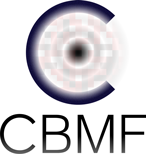Understanding the Correction
There is a phenomenon in the camera used on the Lattice (Hamamatsu, ORCA Flash4.0) that causes a small amount of the electrons that accumulate in a given pixel during an exposure to “carryover” into the following exposure (they “fail” to be cleared during readout), in a non-linear and pixel dependent fashion. This means that a bright object in one channel can leave a noisy “ghost image” in the same part of the field of view in the immediately following image (e.g. in the next channel). This results in a very annoying artifact in the deskewed and max-projected images

Channel 2 demonstrates the residual electron artifact seen in the Hamamatsu ORCA Flash 4.0 in Synchronous Trigger mode (as used on the Lattice Light Sheet Microscope), after deskewing and max projection.
We have characterized this phenomenon for our camera and can “correct” this issue, predicting the carryover charge expected in any given pixel in the image as a function of the intensity of that pixel in the immediately preceding image.
Applying the Correction
In order to apply this correction to your dataset during post-processing, use the -c or -C flag with the lls command:
lls -C /path/to/LLSfolder or lls -c /path/to/LLSfolder
The capital -C flag additionally applies a selective median filter, after Flash pixel correction, styled after Phillip Keller’s code published here.
The code for this correction exists for both MATLAB and Python and will be provided on request. Please contact us.

